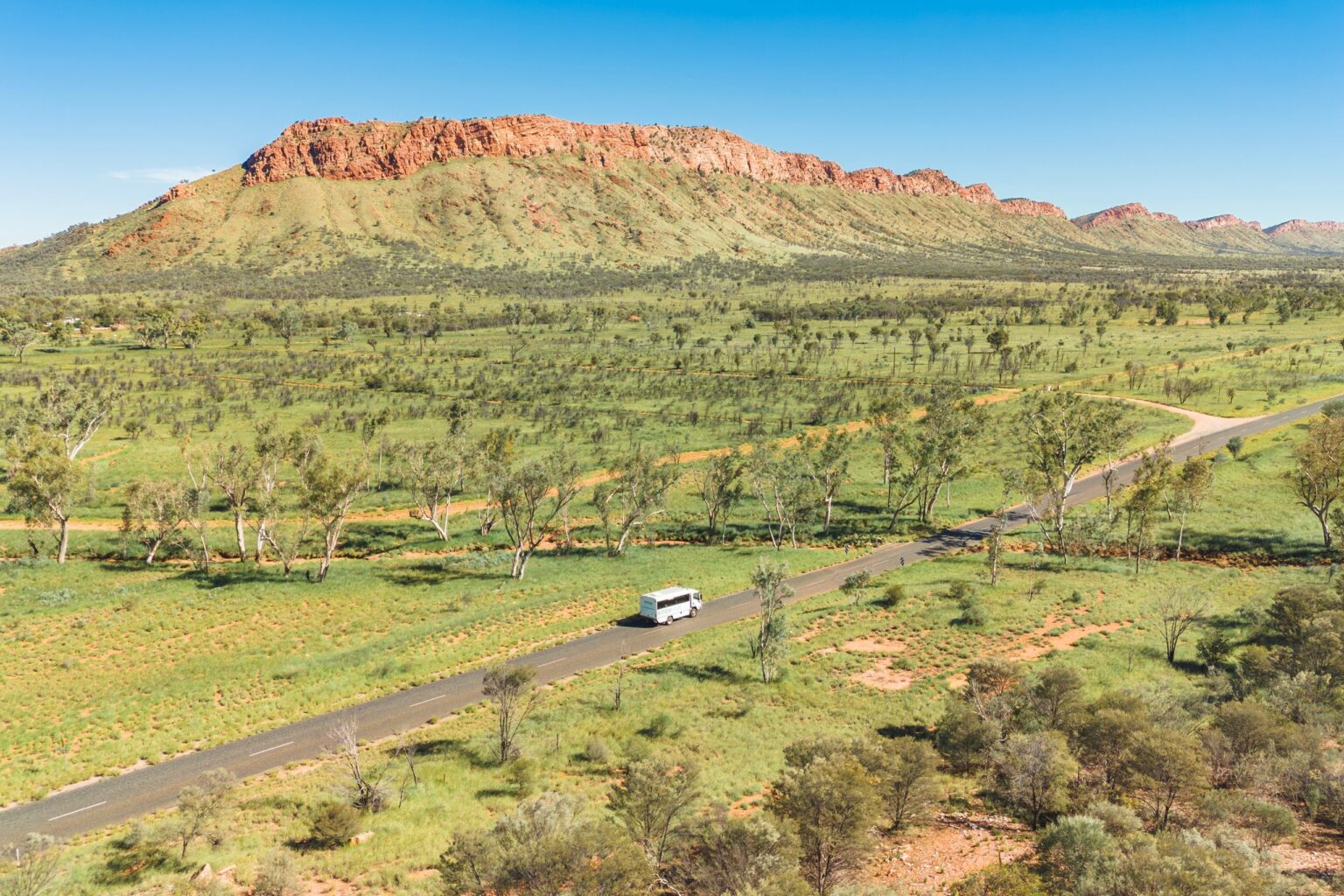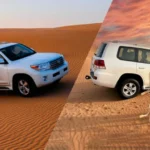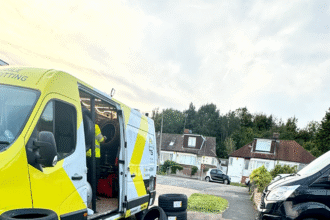Picture this: You’re standing in front of Uluru at sunset, watching the massive monolith change colors as the day fades. You pull out your phone to capture the moment and share it with friends back home, but there’s no signal. Zero bars. Your expensive international roaming plan is useless in this remote corner of Australia.
This scenario plays out thousands of times each day across Australia’s vast Outback. While these remote landscapes offer some of the world’s most breathtaking adventures, they also present unique challenges for modern travelers who need to stay connected. From the red deserts of the Northern Territory to the rugged wilderness of Western Australia, the Outback covers over 70% of the continent but has limited mobile coverage that can leave even the most prepared traveler disconnected.
The good news? With the right planning and connectivity solutions, you can explore Australia’s most remote destinations while staying safely connected for navigation, emergencies, and sharing those once-in-a-lifetime moments. Modern solutions like eSIM Australia plans are changing how travelers approach connectivity in remote areas, offering instant activation and flexible data options that work even in challenging locations.
Why Staying Online in Remote Australia Matters
Connectivity in the Outback isn’t just about convenience – it’s about safety, navigation, and making the most of your adventure. When you’re hundreds of kilometers from the nearest town, having access to reliable mobile data can literally be a lifesaver.
Safety First: Navigation and Emergency Access
The Australian Outback can be unforgiving. Temperatures can soar above 40°C (104°F) during the day and drop dramatically at night. Roads can be rough, fuel stations are sparse, and getting lost can quickly turn dangerous. In 2019, a German tourist was stranded for three days in the Outback after his rental car broke down, surviving only because he had enough water and was eventually found by search teams.
Having reliable mobile data means access to GPS navigation apps like Google Maps or specialized offline mapping tools. More importantly, it means you can contact emergency services if something goes wrong. The Australian government’s Emergency Plus app uses GPS to help emergency services locate you, but it needs a mobile signal to work effectively.
Weather conditions in the Outback can change rapidly. Access to weather apps and alerts can help you avoid dangerous situations like flash floods in usually dry creek beds or extreme heat warnings that could affect your travel plans.
Sharing Your Outback Adventure
Let’s be honest – part of the joy of travel is sharing your experiences with others. Whether you’re video calling family to show them a spectacular sunset over Kata Tjuta or posting Instagram stories from a remote camping spot, staying connected enhances the travel experience.
The Outback offers countless photo opportunities that are truly unique. From the otherworldly landscape of Coober Pedy to the ancient rock art of Kakadu National Park, these moments deserve to be shared in real-time, not weeks later when you finally find Wi-Fi.
Many travelers also rely on social media and messaging apps to coordinate with travel companions, especially on multi-day trips where groups might split up for different activities. Having reliable connectivity ensures everyone stays in touch and can share important updates about their location and plans.
Common Connectivity Challenges in the Outback
Understanding the specific challenges of staying connected in remote Australia helps you prepare better and choose the right solutions for your trip.
Limited Mobile Network Coverage
Australia’s mobile network infrastructure is excellent in cities and towns, but it faces unique challenges in the Outback. The vast distances between settlements make it economically difficult for carriers to build cell towers everywhere. Telstra, Australia’s largest carrier, has the most extensive rural coverage but even they acknowledge significant gaps in remote areas.
The “mobile black zones” program, a government initiative to improve rural connectivity, has added hundreds of new base stations, but coverage remains patchy in many popular Outback destinations. Areas like the Great Central Road between Alice Springs and Laverton, or the Tanami Track in Western Australia, can have stretches of hundreds of kilometers with no mobile signal.
Topography also plays a role. The Outback’s flat landscape might seem ideal for radio waves, but rocky outcrops, gorges, and even severe weather can disrupt signals. What looks like open desert on a map might actually have dead zones where multiple carriers simply don’t reach.
High Costs of Traditional Roaming
International roaming charges can quickly turn your dream Outback adventure into a financial nightmare. Many travelers discover that their home carrier’s roaming rates are prohibitively expensive – sometimes $10-15 per day just for basic data access, with additional charges for calls and texts.
Even visitors who purchase local Australian SIM cards face challenges. Traditional SIM cards require you to visit a store, provide identification, and often come with minimum spending requirements or long-term contracts that don’t make sense for short-term travelers. The prepaid options can be expensive per gigabyte, and you might find yourself running out of data in remote areas where you need it most.
Many tourists also discover hidden costs, like activation fees, or find that their “unlimited” local plan actually has strict limits on data usage or throttles speeds after a certain amount of usage. These surprises can be particularly frustrating when you’re already dealing with the challenges of remote travel.
Inconvenience of Physical SIM Cards
Traditional SIM cards create practical problems for international travelers. First, you need to ensure your phone is unlocked and compatible with Australian networks. Many travelers discover at the airport that their phone won’t work with local SIM cards, forcing them to pay premium prices for emergency solutions.
The process of buying and activating a SIM card can eat into valuable travel time. Airport kiosks often have long lines, and staff might not speak your language fluently. If you wait to buy a SIM in remote towns, you might find limited options or discover that shops are closed when you need them.
Physical SIM cards also mean you lose access to your home phone number, which can be problematic if you need to receive important calls or text messages. Switching back and forth between SIM cards is inconvenient and increases the risk of losing the tiny cards.
Solutions for Staying Connected in Remote Australia
Modern technology offers several options for staying connected in the Outback, each with distinct advantages and limitations.
Wi-Fi Hotspots: A Limited Option
Many Outback towns and tourist destinations offer Wi-Fi hotspots, but relying on these alone is risky. Towns like Alice Springs, Coober Pedy, and Broome have cafes, hotels, and visitor centers with Wi-Fi, but the quality varies dramatically.
Public Wi-Fi often has strict time limits, requires constant reconnection, and can be frustratingly slow when multiple users are connected. Security is another concern – public networks aren’t ideal for accessing sensitive information like banking apps or email.
More importantly, Wi-Fi hotspots are only available in settled areas. Once you leave town and head into the real Outback, you’re on your own. This creates a stop-and-go connectivity pattern that doesn’t work well for navigation or emergency situations.
Portable Wi-Fi Devices vs. Mobile Data
Portable Wi-Fi devices (often called “pocket Wi-Fi” or “MiFi”) can be rented from airports or travel companies. These devices create a local Wi-Fi network that multiple devices can connect to, which is useful for families or groups traveling together.
However, portable devices have significant limitations for Outback travel. They’re another piece of equipment to charge, carry, and potentially lose. Battery life is limited, typically 6-8 hours of active use, which isn’t enough for long driving days. The devices themselves can be expensive to rent, and you’re liable for replacement costs if they’re damaged or lost.
Coverage depends on the same cell towers as your phone, so a portable device won’t solve fundamental connectivity issues in remote areas. You’re also limited to the data plan that comes with the device, which might not match your actual usage needs.
The Rise of eSIMs for Seamless Travel Connectivity
eSIM technology is revolutionizing how travelers stay connected globally. An eSIM (embedded SIM) is a digital SIM card that’s built into your phone’s hardware. Instead of inserting a physical card, you download a connectivity plan directly to your device.
For Outback travel, eSIMs offer several crucial advantages. They can be activated instantly – you can purchase and activate a plan while you’re still at home, before you even board your flight to Australia. There’s no need to visit stores, wait in lines, or worry about finding the right size SIM card for your device.
eSIMs also allow you to keep your home phone number active while adding Australian connectivity. This means you can receive important calls and messages on your regular number while using Australian data for maps, internet, and local communication.
The flexibility of eSIMs is particularly valuable for multi-destination trips. If you’re combining your Australian Outback adventure with visits to other countries, you can easily switch between different regional plans without carrying multiple SIM cards.
Simify: Your Go-To Solution for Outback Connectivity
When it comes to reliable eSIM solutions for Australian travel, choosing the right provider makes all the difference. Simify specializes in travel-focused eSIM plans that are specifically designed for international visitors exploring remote destinations.
What sets Simify apart is their understanding of how travelers actually use data. Instead of complicated tier systems or hidden restrictions, they offer straightforward plans with clear data allowances and transparent pricing. Their Australian eSIM plans work with all major local carriers, automatically connecting to the strongest available signal in any given area.
The setup process is refreshingly simple. You purchase your plan online, receive a QR code via email, and scan it with your phone to activate the eSIM. The entire process takes minutes, and you can do it from anywhere in the world with an internet connection.
For Outback travelers, Simify’s plans offer the flexibility to choose data amounts that match your actual needs. Whether you need just enough data for navigation and emergency contact, or want to stream videos and video call family every evening, there’s a plan that fits without paying for unused data.
The company’s customer support is also designed with travelers in mind. They understand that connectivity issues don’t happen during business hours, and their support team can help troubleshoot problems remotely, which is crucial when you’re in a remote location.
Tips for Maximizing Your Connectivity in the Outback
Smart planning and the right preparation can dramatically improve your connectivity experience in remote Australia.
Choose the Right Data Plan
Estimating your data needs for Outback travel requires thinking about your specific activities. Navigation apps like Google Maps use relatively little data – typically 1-2 MB per hour of active navigation. However, downloading offline maps before you leave cellular coverage can save significant data and ensure you have navigation even in complete dead zones.
Social media and messaging apps vary widely in data usage. Text messages and photos use minimal data, but video calls and streaming content can consume gigabytes quickly. A good rule of thumb is to estimate your normal daily usage and multiply by 1.5 to account for increased usage while traveling.
Consider your travel style too. If you’re camping and spending most of your time offline, you’ll need less data than someone staying in accommodations and sharing regular updates. Multi-destination trips benefit from flexible plans that let you add data as needed rather than committing to large amounts upfront.
Optimize Your Device for Remote Travel
Before heading into the Outback, ensure your phone is prepared for challenging conditions. First, confirm that your device supports eSIM technology – most phones manufactured after 2018 do, but it’s worth checking your specific model.
Download offline maps for your entire route before leaving areas with good connectivity. Google Maps allows you to download large areas for offline use, and specialized apps like Maps.me or Gaia GPS offer more detailed topographical information useful for remote travel.
Battery management becomes crucial in the Outback. Bring multiple power banks, a car charger, and consider a solar charger for extended camping trips. Enable low-power mode when your battery drops below 50%, and close unnecessary apps that might be using data or GPS in the background.
Plan Your Route with Connectivity in Mind
While spontaneous adventure is part of the Outback experience, having a rough plan for connectivity can improve both safety and convenience. Use coverage maps from major Australian carriers to identify areas where you’re likely to have signal, and plan important calls or uploads for those locations.
Consider the timing of your trip too. School holidays and peak tourist seasons can strain network capacity in popular destinations, potentially slowing data speeds. Traveling during shoulder seasons often means better connectivity as well as fewer crowds.
Build buffer time into your schedule for connectivity delays. If you need to upload photos, make video calls, or handle important business, don’t plan to do it during your last hour before leaving a town. Networks can be slow or congested, and you don’t want to miss departure times waiting for files to upload.
Conclusion: Explore the Outback with Confidence
Australia’s Outback offers some of the world’s most incredible travel experiences, from ancient Aboriginal cultural sites to landscapes that seem almost alien in their beauty. The challenge of staying connected in these remote areas doesn’t have to limit your adventure – with the right preparation and connectivity solutions, you can explore confidently while staying safely connected.
Modern eSIM technology has transformed connectivity for international travelers, offering instant activation, flexible plans, and the ability to stay connected across vast distances. Whether you’re navigating the red center, sharing sunset photos from remote campsites, or simply ensuring you can call for help if needed, reliable connectivity enhances rather than detracts from the Outback experience.
The key is choosing solutions that match your travel style and needs. For most international visitors, an eSIM from a specialized travel provider offers the best combination of convenience, coverage, and cost-effectiveness. Combined with smart planning and offline backups, you can focus on enjoying your Outback adventure rather than worrying about connectivity.
Don’t let the fear of being disconnected prevent you from exploring one of the world’s last great wilderness areas. With proper preparation and the right connectivity solution, you can experience the magic of the Australian Outback while staying safely connected to the world beyond the red horizon.
Frequently Asked Questions
1. Can I use my regular phone plan in Australia’s Outback?
Using your regular phone plan in Australia’s Outback through international roaming is technically possible but comes with significant drawbacks. International roaming charges are typically very expensive – often $10-15 per day for basic data access, with additional charges for calls and texts. Even with daily roaming packages, you’ll likely face strict data limits that can be quickly exceeded when using navigation apps or sharing photos.
More importantly, international roaming relies on agreements between your home carrier and Australian networks. This means your phone will only connect to specific partner networks, which may not have the best coverage in remote areas. An eSIM from a specialized travel provider offers better coverage flexibility and more affordable rates specifically designed for travelers.
2. Are eSIMs compatible with all smartphones?
eSIM technology is supported by most modern smartphones, but not all devices are compatible. Generally, iPhones from the iPhone XS (2018) and later support eSIM, as do most Android phones released after 2019 from major manufacturers like Samsung, Google, and OnePlus.
To check if your phone supports eSIM, look for “eSIM” in your settings menu, or check your manufacturer’s website for your specific model. Some phones support dual SIM functionality, allowing you to keep your home SIM active while adding an eSIM for travel – this is particularly useful for receiving calls and messages on your regular number while using local data.
3. How much data do I need for a week in the Outback?
Data needs for Outback travel vary significantly based on your activities and travel style. For basic navigation and emergency contact, 1-2 GB per week is usually sufficient. This covers GPS navigation (which uses about 1-2 MB per hour), weather updates, and occasional messaging.
If you plan to share photos on social media, make video calls, or stream content, you’ll need more data. A typical traveler who shares photos daily, makes occasional video calls, and uses navigation actively might use 3-5 GB per week. Heavy users who stream videos, work remotely, or share lots of content should consider 7-10 GB or more.
Remember that downloading offline maps before entering remote areas can significantly reduce your data usage while providing navigation backup in areas with no signal.
4. Is Wi-Fi a better option than an eSIM in remote Australia?
Wi-Fi and eSIMs serve different purposes in remote Australia, and Wi-Fi alone isn’t sufficient for Outback travel. While Wi-Fi is available in many Outback towns and tourist accommodations, it’s often slow, unreliable, and limited to specific locations.
The main limitation of Wi-Fi for Outback travel is that it’s not available when you need it most – while driving between destinations, during emergency situations, or when exploring remote areas away from towns. Wi-Fi also doesn’t help with navigation or emergency contact when you’re hours away from the nearest settlement.
An eSIM provides continuous connectivity that moves with you, offering navigation, emergency access, and communication capabilities throughout your journey. The best approach is often combining both – using Wi-Fi when available for data-intensive activities like uploading photos, and relying on your eSIM for navigation and essential connectivity while traveling.
5. How do I set up an eSIM for my Outback trip?
Setting up an eSIM for your Australian Outback adventure is straightforward and can be done before you leave home. First, confirm that your phone is unlocked and supports eSIM technology. Then, choose a travel eSIM provider and purchase a plan that matches your data needs and trip duration.
Once you purchase your plan, you’ll receive a QR code via email. To activate the eSIM, open your phone’s settings, find the cellular or mobile data section, and look for an option to add a new plan or scan a QR code. Scan the provided code, and your eSIM will be installed and ready to use.
Most eSIM providers recommend activating your plan shortly before departure or upon arrival in Australia. The activation process typically takes just a few minutes, and you can test the connection before heading into remote areas. Keep your QR code accessible in case you need to reinstall the eSIM, and contact your provider’s support team if you encounter any issues during setup.

















